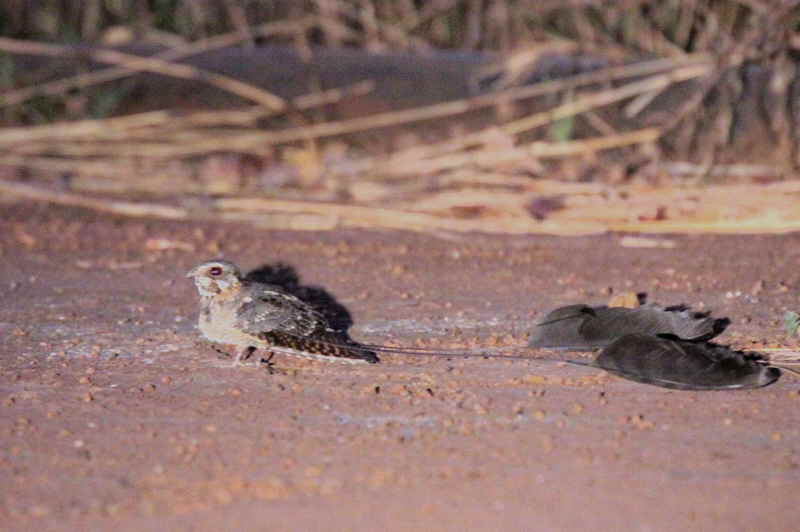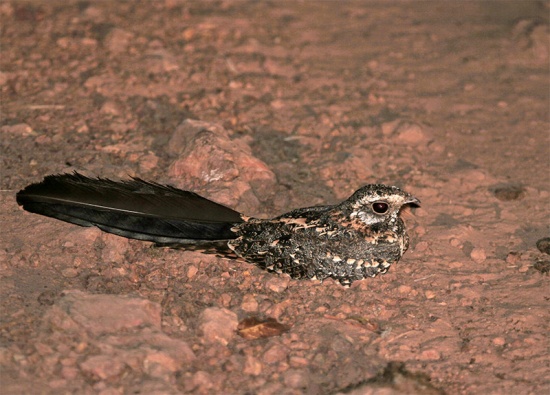
Macrodipteryx longipennis
SUBFAMILY
Caprimulginae
TAXONOMY
Caprimulgus longipennis Shaw, 1796, Sierra Leone. Monotypic.
OTHER COMMON NAMES
French: Engoulevent а balanciers; German: Fahnennachtschwalbe;
Spanish: Chotacabras Portaestandarte.
PHYSICAL CHARACTERISTICS
8–9 in (20–23 cm), excluding long standards on wings of
breeding male; 1.3–2.3 oz (37–65 g). Sexually dimorphic. Variable
cryptic coloration; males often blacker with whiter speckles,
while females are more buffy or sandy. Breeding males
have unmistakable standards (extremely elongated second
innermost primaries) on wings.
DISTRIBUTION
West and central Africa from the Gambia to southwest Sudan.
HABITAT
Lightly wooded or bushy savannas.
BEHAVIOR
Roosts on ground during day; active from dusk until before dawn.
Males assemble to display at leks that are visited by females.
FEEDING ECOLOGY AND DIET
Feeds on insects caught in sustained hawking flights.
REPRODUCTIVE BIOLOGY
Unlike most members of the Caprimulgidae, probably polygynous.
Unlined nest on ground with clutch of one or two eggs.
Eggs are pale pink to buff-gray or brown, with dark spots of
blotches. Incubation and care of young carried out by female
alone. Small young have down that is buff, mottled with black
on upperparts.
CONSERVATION STATUS
Not threatened.
SIGNIFICANCE TO HUMANS
None known.
Photo Gallery of - Standard-winged nightjar




 Animalia Life
Animalia Life